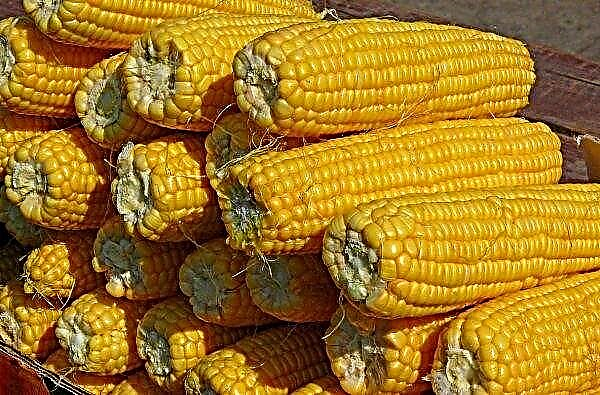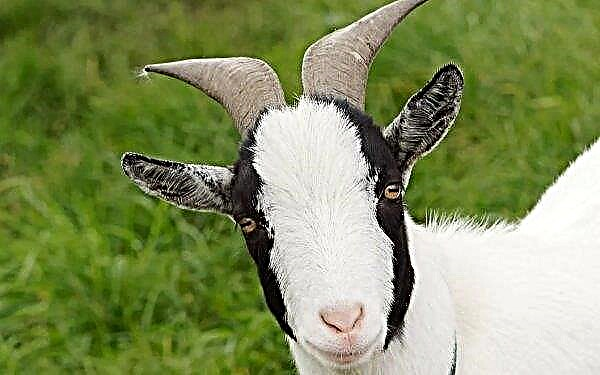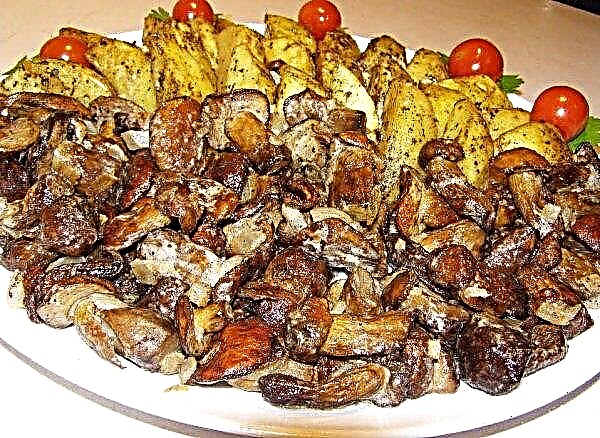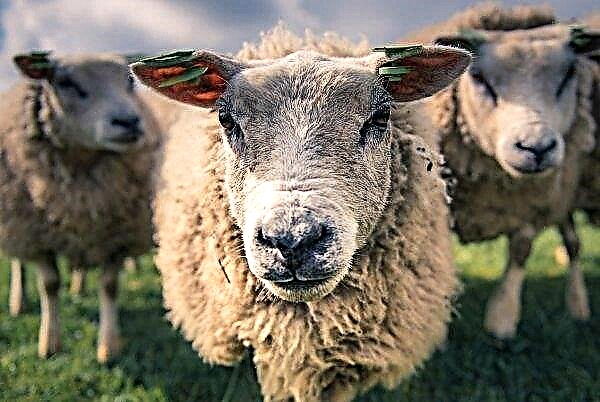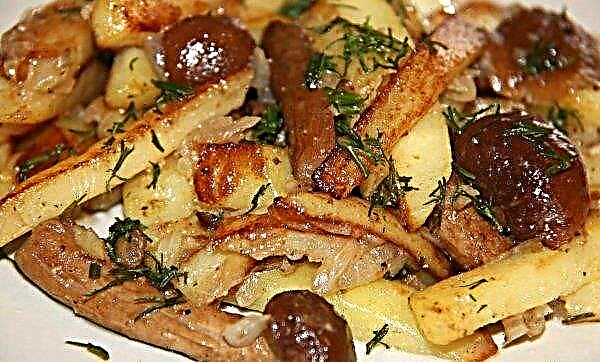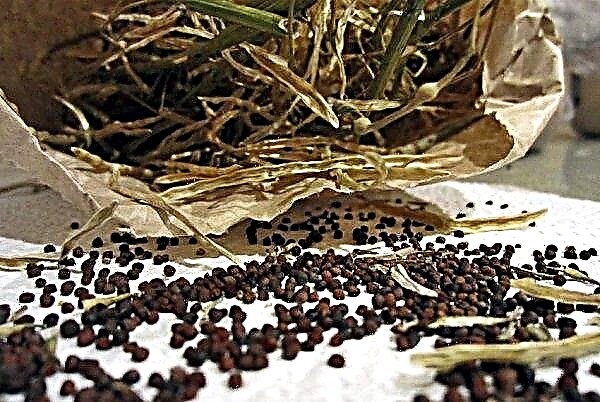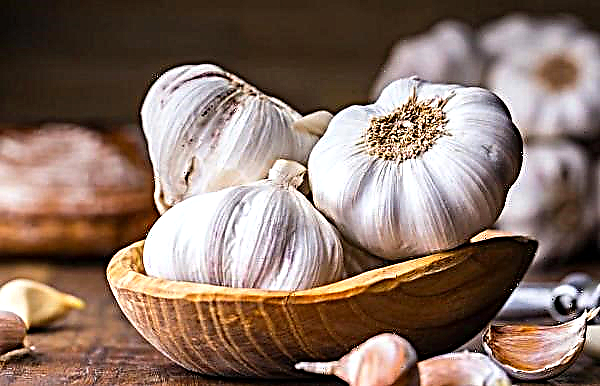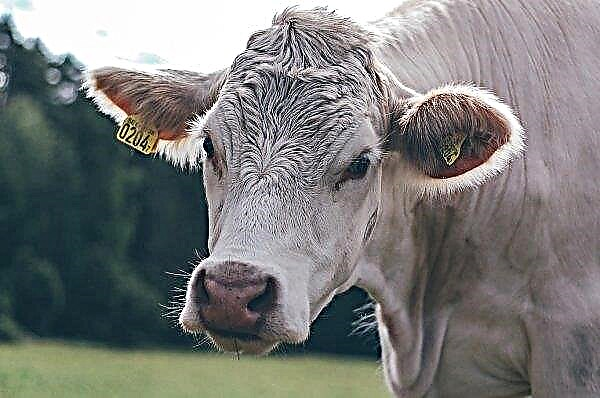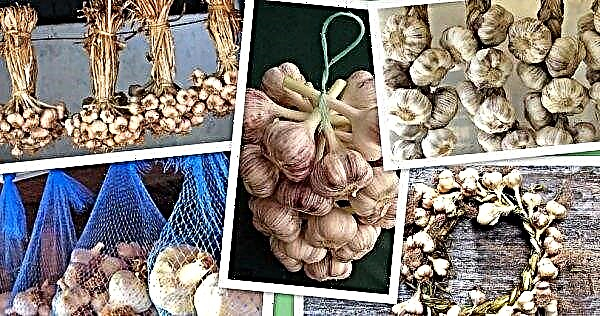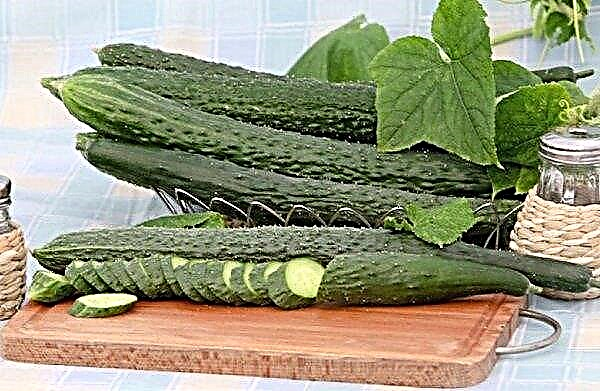Despite the fact that the Trakenen breed belongs to the most ancient breeds of horses, its popularity remains to this day. To understand the reasons for the demand for tracens, we will consider detailed information about them, as well as find out the features of home maintenance.
Origin of breed
It is known that the first representatives of the Trakenen horse breed appeared on the territory of Prussia in the XIII century, as a result of the efforts of local horse breeders, whose main goal was to create strong, strong and hardy horses for participation in hostilities. For a long time, selection did not give positive results, and the horses of the desired characteristics managed to be bred only in 1732. The breed got its name from the town of Trakenen, where selection work was carried out. The best local forest horses, Belgian, Arab, Anglo-Scottish, Spanish and Persian thoroughbred horses were selected for selection.
The breed got its name from the town of Trakenen, where selection work was carried out. The best local forest horses, Belgian, Arab, Anglo-Scottish, Spanish and Persian thoroughbred horses were selected for selection.
Characteristic
Each breed has its own distinctive features, which are represented by appearance, character, as well as productive indicators, allowing to distinguish horses of one breed from all others.
External characteristics
Details of the appearance of the mount are presented in the form of a table:
| Appearance | Characteristic |
| Height at the withers | The average height is 166 cm, but individuals are often found 175 cm in height. |
| Torso length | About 170 cm. |
| Chest circumference | On average, an adult is 195 cm. |
| Metacarpus | About 21 cm. |
| Suit | It can be bay, black, red, occasionally gray. |
| Head | It has the correct shape, graceful lines, the profile is slightly concave or straight. |
| The ears | Small, peaked, upright. |
| Eyes | Large, expressive. |
| Neck | Cone-shaped, has an average length. |
| Mane | It is extended in length, has easy splendor. |
| Withers | Long, with developed muscle mass. |
| Croup | It is characterized by massiveness, muscularity, has an oval shape. |
| Tail | Long, moderately magnificent. |
| Back | Strong, muscular. |
| Chest | Wide, with an obliquely set shoulder blade. |
| Legs | Very strong and developed, medium length, have the right shape. |
| Hooves | They are massive, have the correct shape. |
Temperament
Since the trakens were bred as military horses, they have a decisive, persistent, and quite quick-tempered character. But at the same time, the horses are quite docile, patient and can easily adapt to changing weather conditions.
Did you know? In order to fully restore strength, a horse plunges into deep sleep for only 4 hours (at night), but during the day, in his spare time from work, he can fall into a state of half-sleep (standing with his eyes closed) from 2 minutes to half an hour, hearing everything going around.
Despite the hot temper inherent in horses in relation to other animals, which horses can sometimes take for enemies, the horse is easily influenced by humans, is well adapted to frequent training, and therefore almost always achieves a positive result in sports.
Productive qualities
Excellent physical characteristics and a fairly flexible character allow you to effectively use this breed in equestrian sports. Riders are also involved in agricultural work and horse riding.
The average life expectancy of horses of this breed is 30 years, the period of puberty is 2 years, but it is recommended to breed when the horse has reached 4 years of age. Females are characterized by high milk production, as for representatives of a sports breed. One female per month is able to produce about 240 liters of milk, per day - 7-8 liters.
Females are characterized by high milk production, as for representatives of a sports breed. One female per month is able to produce about 240 liters of milk, per day - 7-8 liters.
Advantages and disadvantages
- The main advantages of the breed are characterized by:
- universality;
- high working capacity;
- light and smooth movements, allowing the use of horses in hippotherapy;
- good ability to jump in high, so that the horses take first place in sports;
- attractive and representative appearance;
- balanced character;
- compliance to trainings.
- The negative qualities include:
- moodiness and spoilage regarding care;
- the difficulty of breeding in the herd way and the average survival rates of foals - due to weak immunity;
- predisposition of animals to hernias and joint diseases.
Conditions of detention
The Trakenen breed is quite demanding on the conditions of keeping, therefore, for the normal growth and development of animals it is necessary to provide them with a good room and pay special attention to care.
Room requirements
Horses are kept in a specially equipped dwelling - a stable. In this case, each individual should be in a small stall, which is equipped with containers for feed and water. Tanks can be made of wood, metal, cast iron or plastic (only feeders), while drinking bowls are better to choose from stainless steel or cast iron.
The room where the horses are kept must have a concrete floor with a thickness of at least 20 cm. Concrete is covered with rubber mats on top, about 5 cm thick. Above the rubber flooring, sprinkle abundantly with sawdust or straw.
Important! The main advantage of rubber mats is the impossibility of penetrating into the stable of rodents, which are spreading infections.
As for the temperature regime, it is worth noting that trakens are resistant to temperature changes and can adapt to heat or cold. In order to exclude the possibility of regular incidence of individuals, it is still recommended to adhere to a moderate temperature regime, in the summer - 25 ° C, and in winter - to resort to room warming so that the temperature does not drop below 8 ° C.
Horses suffer from a lack of light, so the stable must have enough windows so that it is well lit during the day. In the evening, the stable should be illuminated by artificial sources of light in sufficient quantities; It is advisable to install a separate light bulb above each stall. Trakenen horses do not tolerate drafts, so it is necessary to ventilate the room in the winter, after having overtaken the animals in a protected place.
Trakenen horses do not tolerate drafts, so it is necessary to ventilate the room in the winter, after having overtaken the animals in a protected place.
Humidity in the stable should not exceed 70%. It is worth noting that the housing for horses in itself has high humidity, due to the large number of excreta of animal waste products.
In order not to exceed normal moisture indicators, it is recommended to regularly clean the manure and replace the litter with dry one.
Feeding
The ration of feeding horses directly affects the state of their health and performance, therefore, we consider in more detail what is necessary to feed horses in winter and summer.
In winter, horses must eat hay in large quantities; it is best to harvest hay from herbs. A quality product should be:
- well-dried;
- having a pleasant smell of dried grass;
- no signs of mold and rot.
Important! Horses from clover cannot use hay, which can cause joint problems.
An alternative to hay is oat or barley straw, however, hay cannot be completely excluded from the diet, it can only sometimes be replaced with straw. It is also necessary to introduce grain into the horse's diet: oats or barley. Root crops and vegetables are used as juicy feed for the animal, carrots, fodder beets, pumpkin, potatoes are suitable for feeding.
Approximate daily diet for a horse weighing 500 kg:
- hay - 16 kg;
- grain - 4 kg;
- a mash of root vegetables, vegetables and bran - 8 kg.
- In the morning they give grain and a quarter of the daily rate of hay.
- At lunch, root crops and a fourth of the daily rate of hay are given.
- In the evening they give grain and half the daily rate of hay.
 The summer diet of horses is practically no different from the winter, except that hay is replaced with fresh grass. The best green food in the summer for a horse is grass of cereals and legumes.
The summer diet of horses is practically no different from the winter, except that hay is replaced with fresh grass. The best green food in the summer for a horse is grass of cereals and legumes.The horse eats as much fresh grass as it needs, so when stalling it is necessary that the greens are always in the trough. If a horse grazes in a meadow all day, then you do not need to control the amount of grass eaten.
To ensure that the horses do not suffer from a lack of vitamins, it is necessary to add feed additives to the diet. These additives include bran and vitamin-mineral complexes. The latter are selected based on the recommendations of the veterinarian, depending on the needs of the horse. A mandatory additive in the animal’s diet is salt briquettes, which make up for the lack of minerals in the body.
Did you know? Trakenen horses subjected to the most severe selection. Only 3% of stallions as a result of breeding are suitable in their parameters for further use in equestrian sports.
The horses must be provided with fresh high-quality water. It is changed every day, carefully washing the drinking bowl before it.
The main foal feed in the first 2 months of life is mare's milk. At the age of 1.5 months, foals begin to give concentrated feed. These are highly nutritious mixtures based on oats (43%), bran (35%), oilcake (20%) and legumes (2%). Replacement of a highly nutritious mixture can be a special compound feed. Gradually, the amount of concentrates in the diet is increased:
- at 2 months each foal should eat 1 kg of the mixture;
- at 4 months - 2 kg;
- at 6 months - 4 kg.

Care and hygiene
Horse stalls must be kept clean, therefore the stables are cleaned daily, and litter is replaced. In addition, feeders and drinking bowls are regularly cleaned, they are thoroughly washed from food debris and dried in the sun. Every month they carry out a general cleaning, treating the stables with antiseptics from parasites.
Do not forget about caring for the body of the animal - you must regularly invite a veterinarian to inspect the horses, clean and shoe his hooves, filed his teeth, and vaccinated in a timely manner. It is necessary to regularly bathe horses, for which it is worth using slightly warm water, and in order to maintain the shine of the coat, it is washed with special shampoos.
Important! You can’t pour water on the horse’s head and ears - it makes him very angry.
The daily morning routine should be combing the wool with a special brush. It is necessary to comb out the horse’s hair starting from the back, slowly moving down, and finally, you need to comb the mane and tail.
When combing the hair, you can detect wounds on the body of the animal: mechanical damage or inflamed insect bites, which are treated with antiseptics and other means on the recommendation of a veterinarian. Horse training classes should be held from an early age, one person must always participate in this on an ongoing basis. Classes begin with getting used to the voice of the owner, performing elementary commands by changing the tone of communication with the animal.
Horse training classes should be held from an early age, one person must always participate in this on an ongoing basis. Classes begin with getting used to the voice of the owner, performing elementary commands by changing the tone of communication with the animal.
When a horse begins to obey commands, it is sure to be encouraged with goodies - sugar, breadcrumbs, carrots, which are an excellent motivation for the animal.
Disease prevention
To make the horse less sick, it is necessary to take certain preventive measures, which are presented:
- regular cleaning of the premises and daily change of litter, in order to avoid the development of harmful microorganisms;
- regular nutrition and compliance with the frequency of feeding;
- monthly examination by a veterinarian to identify possible health problems and implement timely treatment;
- providing individuals with complex supplements in the form of a vitamin-mineral complex to enhance immunity;
- hygiene of horses, their regular bathing, care of hooves, teeth and wool;
- timely vaccination on the recommendation of a veterinarian;
- the use of high-quality feed, previously checked for the presence of foreign objects, impurities of dangerous plants, rodent excrement, traces of rot, mold;
- ensuring a relaxing night's rest and regular breaks in the process of hard work;
- compliance with the necessary microclimate in the room where the horses live.
Prospects for Breeding Trakenen Horses
Currently, the Trakenen horse, as the only racehorse without an admixture of extraneous blood, is bred in Germany. In this country, there are about 2.5 thousand mares and 300 stallions. Breeding breeds involved in other countries, among them: France, Denmark, USA, Poland, New Zealand, England, Croatia, Russia. It can be concluded that the prospects for the Trakenen breed are quite good, its demand is due primarily to good physical data, allowing universal use of horses.
It can be concluded that the prospects for the Trakenen breed are quite good, its demand is due primarily to good physical data, allowing universal use of horses.
Famous representatives
Famous Trakenen horses became thanks to their sporting achievements. Today, in the European countries and the USA, they are dominant in classic equestrian sports.
The most famous representative of the Trakenene breed is the gray horse Abdullah, who played for the US team and won the Olympics in 1984. Also famous was the Russian horse Pepel, who helped Honored Master of Sports Elena Petushkova at the Olympic Games and the World Championship in 1970 in dressage to take first place. So, the Trakenen breed of horses remains popular today, especially in large farms, as it is universal. And in order to grow up a healthy, working animal, it is necessary to provide him with proper care, good nutrition and good living conditions.
So, the Trakenen breed of horses remains popular today, especially in large farms, as it is universal. And in order to grow up a healthy, working animal, it is necessary to provide him with proper care, good nutrition and good living conditions.

